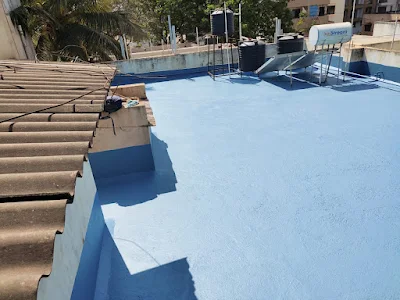A moisture-curing product is cured due to the presence of moisture in the atmosphere. These form a protective coating/matrix / reach the final stage by reacting chemically with the moisture in the air. Moisture curing materials are more applied on roofs, the outer surfaces of buildings, and on marine equipment and vessels because they can cure in the moist air for works like flooring, tiling, insulation, roofing, and wall covering.
Below are few points (Moisture cure coatings, moisture cure sealants, moisture cure adhesive):
1. Moisture-cures are that they offer resistance to
ponding water.
2. Moisture curing sealant/coatings/material produce
a highly reflective surface and possess good adhesion properties.
3. Moisture-curing coatings also prevent pitting
corrosion and bacterial corrosion on marine machinery.
4. Generally, they come in one component
5. Moisture cures show good thermal-mechanical and
weathering properties and are widely used in reactive hot melt adhesives and
coatings.
6. Moisture cures bond with surfaces that are
difficult to bonds, such as wood-based materials, untreated metal, or plastics, delicate
and thin materials, like plastic panels, glass, and sheet metal fascia.
7. Moisture cures act as insulation material at
exterior applications that may be exposed to temperatures in excess of 100
degrees.
8. Moisture cures show the high elastic property in a very vast temperatures range.
9. Moisture cures can be applied on damp surfaces
and even in very low or negative temperatures.
10. Moisture cures forms: Permanently elastic, vibration-damping, compensate different thermal length expansions, Low to high viscosity for optimal application, Instant seal, Resistance to oils and chemicals, Flame retardant, Low to high thermal conductivity, Long-term resistance to harsh weather conditions, etc.


No comments:
Post a Comment